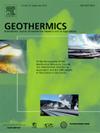Prospects and challenges for utilisation of low- to medium-temperature geothermal resources in Tanzania
IF 3.5
2区 工程技术
Q3 ENERGY & FUELS
引用次数: 0
Abstract
The key purpose of this qualitative study is to explore the potential for effective utilisation of low- to medium-temperature (i.e., ˂150 °C) geothermal resources in Tanzania. Worldwide, these resources are mostly harnessed locally for direct use as a heat source. In contrast, high-temperature resources are mainly used for power generation, becoming an important component of the national energy supply. As a result, the development of the latter is more advanced than that of the former. In Tanzania, five geothermal resources have been chosen as priority areas for development. Three of them, Luhoi, Songwe, and Kiejombaka, are low- to medium-temperature resources, while the other two, Ngozi and Natron, are most likely to host both low- to medium and high-temperature systems. However, the progress is slow due to funding scarcity, insufficient knowledge of the geothermal systems, and a lack of understanding of how they can be effectively utilised to enhance economic development in the local communities. In investigating the most suitable methods for utilising low- to medium-temperature geothermal resources, the first step was to analyse the energy demand of the societies residing in the five above-mentioned areas by assessing their economic activities. Then, the most suitable methods to meet the energy needs and pave the way for new economic and social development opportunities were identified. It was found that the most effective way to harness low- to medium-temperature geothermal resources in Tanzania is to use them as the direct heat source in greenhouses, preservation of crops and animal products, hatcheries, aquaculture, geothermal spas, and balneotherapy. Binary (Organic Rankine Cycle) power plants might also suit small, isolated populations with low energy demands. Implementing these forms of utilisation is expected to stimulate economic growth by creating employment opportunities, promoting the development of agro-processing industries, and paving the way for new business prospects. Some major challenges include insufficient reservoir knowledge, high capital costs, shortage of funds and experts, and poor infrastructure. These challenges could be overcome if the government actively invests in developing low- to medium-temperature geothermal resources to benefit the local societies and the whole country. This qualitative study provides insight into the effective utilisation of low- to medium-temperature geothermal systems, obstacles and opportunities related to their development in Tanzania. However, a detailed quantitative economic analysis is required to evaluate the feasibility of the suggested applications.
求助全文
约1分钟内获得全文
求助全文
来源期刊

Geothermics
工程技术-地球科学综合
CiteScore
7.70
自引率
15.40%
发文量
237
审稿时长
4.5 months
期刊介绍:
Geothermics is an international journal devoted to the research and development of geothermal energy. The International Board of Editors of Geothermics, which comprises specialists in the various aspects of geothermal resources, exploration and development, guarantees the balanced, comprehensive view of scientific and technological developments in this promising energy field.
It promulgates the state of the art and science of geothermal energy, its exploration and exploitation through a regular exchange of information from all parts of the world. The journal publishes articles dealing with the theory, exploration techniques and all aspects of the utilization of geothermal resources. Geothermics serves as the scientific house, or exchange medium, through which the growing community of geothermal specialists can provide and receive information.
 求助内容:
求助内容: 应助结果提醒方式:
应助结果提醒方式:


